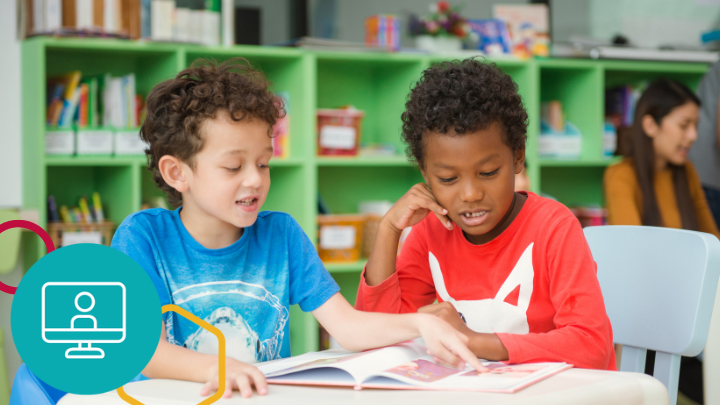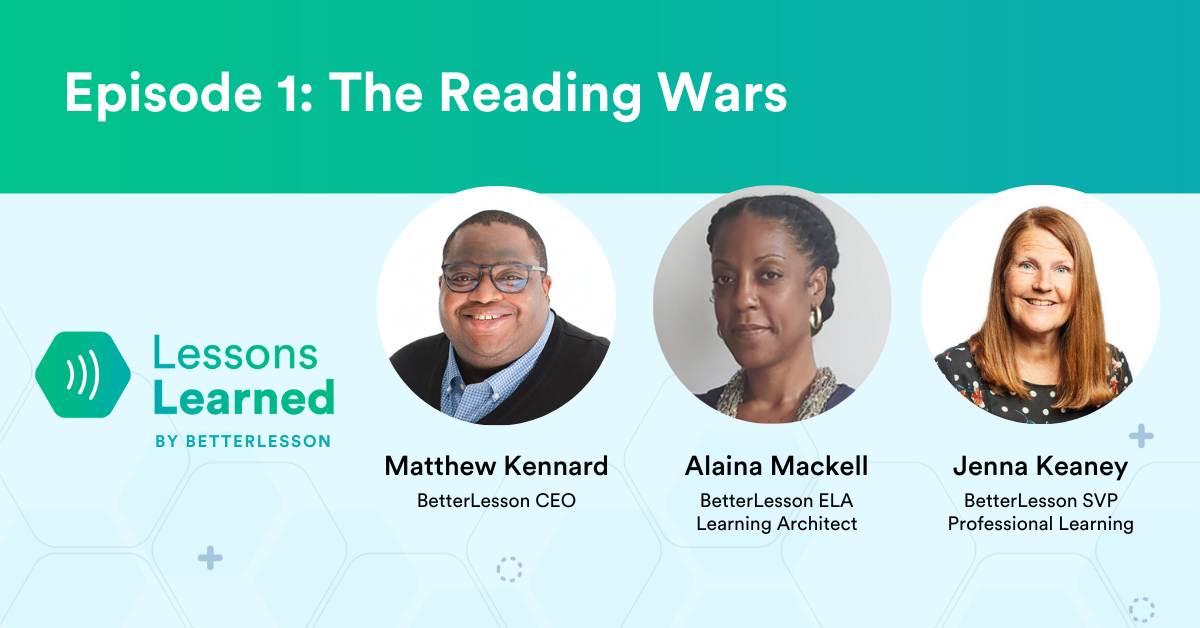The Science of Reading is having its moment right now, and it’s popping up everywhere in the world of education. But despite its seemingly newfound popularity, it isn’t just a trend; it’s a well-established framework grounded in cognitive science, linguistics, neuroscience, and psychology. It bridges the gap between academic research and classroom instruction, all with the goal of answering the question, “how do people learn to read?”
How the Science of Reading Works
A major takeaway from The Science of Reading is the importance of teaching students how to “decode” words by breaking down their individual sounds and letters. This differs greatly from the more common practice, Balanced Literacy, which generally focuses on whole-word recognition or the use of context clues and pictures to figure out the words. While both approaches have the same end goal–to teach early learners to read–they do so using different pedagogies. Balanced Literacy seeks to have students use their understanding of the context to guess at the unknown word, while the Science of Reading looks at it in a more structured approach, more as a learning challenge that can be systematically solved. A common misconception is that focusing on phonics (and SOR) will lessen the joy students experience when reading, but that’s just not the case. The Science of Reading brings joy by empowering and teaching young learners the critical skills needed for accessing and interpreting text. The intrinsic motivation–and joy–will follow. After all, you cannot enjoy reading if you cannot read.
A More Inclusive Reading Pedagogy
One reason why the Science of Reading is embraced by many schools and districts is because SOR is more of an equal opportunity solution, since it is more inclusive to students with learning disabilities and from lower income families. Learning to read with sight words and word recognition doesn’t work for all students, and diagnosis of a learning impairment can take years. Often, support for a learning disability (like dyslexia) is privatized, making it accessible only to those that can afford it. The systematic methods behind the Science of Reading teaches all types of learners how to read–even those with dyslexia–essentially giving all early learners a more level playing field.
It’s crucial to note that while often associated solely with phonics, the Science of Reading encompasses a much wider spectrum of foundational skills. These include phonological awareness, fluency, vocabulary, comprehension, oral language, writing, executive functioning, motivation, and content knowledge. These elements work together to lay the groundwork for not just reading proficiency, but for a student that can also write, think, understand, and communicate.
Why Johnny Can’t Read
The Science of Reading debate was thrust into the spotlight in the 1950’s and 60’s when Rudolph Flesch published a (soon-to-be) bestselling book, Why Johnny Can’t Read, and then in 1967, a 4-year study, Learning to Read: The Great Debate, was published by Jeanne Chall, head of the Harvard Reading Laboratory. Flesch and Chall agreed that explicit, systematic phonics was the best way to teach students to read. Chall went on to find, “a child must first learn to read before he can read to learn, and explicit reading instruction leads to better results, without compromising comprehension.” Chall’s work sparked curiosity in lots of different fields: education, psychology, linguistics, and neuroscience, and all the culminating studies would eventually become the research behind the Science of Reading.
Dispelling Misconceptions and the Complexity of Comprehension
While Flesch and Chall initially focused on phonics, the Science of Reading as it stands today doesn’t just revolve around phonics and phonemic awareness, even though these aspects tend to dominate discussions. Rather, SOR emphasizes a comprehensive literacy program that integrates all facets of literacy development. The National Reading Panel’s core five components–phonological awareness, phonics, vocabulary, fluency, and comprehension–have been expanded since its initial convention in 1997 to embrace broader variables like oral language, written expression, and content knowledge, among other things. As the knowledge around “how we learn to read” evolves, so does the Science of Reading’s strategic approach to learning.
Despite some evolution around the components of literacy, comprehension, one of the National Learning Panel’s core 5, remains a pivotal focus in the Science of Learning. The problem is, despite the decades of research, the way students “learn” reading comprehension remains very much a mystery. Unlike foundational skills (like learning vocabulary) that can be taught and tested in a straightforward manner, comprehension defies any standardized definition or assessment source. Its complexity lies in the interplay of various factors that influence its development, making it a skill that cannot be easily grasped. If it were a math equation, comprehension would equal the ability to read written text + understanding the meaning of the words and sentences + relating that information to your existing knowledge of the topic or scenario. Since comprehension cannot be “taught,” it instead becomes the goal.
Bringing the Science of Reading to the Classroom
The Science of Reading provides a wealth of insights, but translating these findings into classroom practice isn’t always straightforward. Educators should exercise caution and diligence when embracing approaches touted as “The Science of Reading Curricula.” Teachers should always double-check the strategies before implementing new practices to ensure alignment with their students’ needs and the broader educational context.
Inside a first grade classroom, the Science of Reading may look like a teacher using a sound curriculum as a guide for planning out their Reading and Literacy instruction. This instruction may include playing phonemic awareness games to review previously taught speech sounds, building, spelling, and reading words with a targeted spelling pattern, followed-up by students using decodable readers instead of leveled readers to practice decoding unknown words and comprehending text in a meaningful way. When students get stuck on a word while reading their text, you will see the teacher providing prompts to guide the student towards using what they have learned about sound-symbol relationships to decode that word, without any mention of the cueing system. You may see the teacher checking students’ prior knowledge and building their background knowledge before having them listen to a complex text about the seasons read aloud, engaging them in purposeful follow-up discussion around the text, before guiding them through an aligned written task. A Science of Reading classroom infuses reading into every aspect of the day, aiming to reach fluency while also building comprehension, knowledge, and a passion for the written word.
What’s Next For The Science of Reading?
As we navigate the evolving landscape of literacy instruction–while simultaneously trying to make up for pandemic learning loss–schools and districts are open to modernizing their approach to reading instruction. But because of its comprehensive nature there are many intricacies to the Science of Reading, and even more misconceptions. It is not merely teaching a student how to put together sounds and calling them a reader, it’s teaching them how to comprehend, communicate, and think effectively in the world around them. While some fear the Science of Reading is too systematic to instill a love of reading in early readers, we’d argue that SOR makes reading instruction more reliable and replicable, and therefore more accessible and enjoyable to all.
Want to take a deeper dive into this topic? Watch BetterLessson’s Alaina Jackson-Mackell and Romain Bertrand as they discuss all things Science of Reading in the webinar, “Building Strong Readers.”
Watch Now







